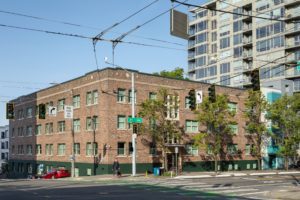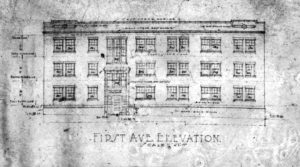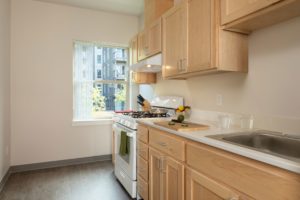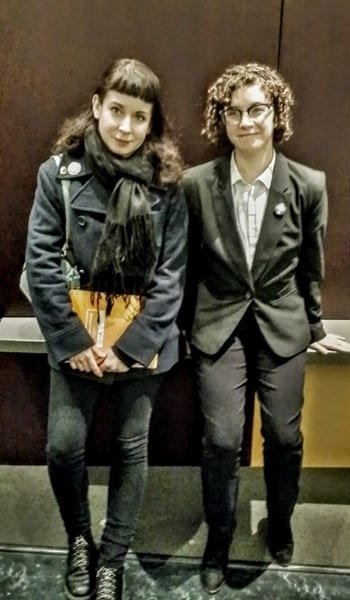Labour Temple – 2023 Best Preservation Project Award
Historic Seattle’s Annual Preservation Celebration is coming up on September 28, 2023. We’ll celebrate the projects and people that help amplify our mission. Today, we feature the Labour Temple, the 2023 Best Preservation Project Award recipient.
Congratulations to the Labour Temple!
Designated a City Landmark in 2008, the Labour Temple (originally the Seattle Labor Temple) in Belltown (2800 1st Avenue) represents an important aspect of Seattle’s notable labor history as the booming wartime workforce increased the number of local workers and numerous unions that established offices in the vicinity. Constructed by the labor unions in 1942, the building was owned and occupied by them for almost 80 years. An addition to the north (containing an auditorium) was constructed in 1946 and a third story was added to the original two-story building in 1955. The property served as headquarters of the MLK Labor Council and as long-time focal point for union organizing and activities in the county. It was the last large functioning labor hall in Belltown, a neighborhood that was once the center of union activity.
In the last few decades, with the rising costs of real estate, constituents of the labor unions moved farther out of the city and the building took on some deferred maintenance. The Seattle Labor Temple Association considered restoring the building or listing it for sale. They chose the latter; FAUL purchased the original south building in December 2020 and the north addition was sold to a church. The building underwent extensive renovation, welcoming its first office tenants in 2022 and reopening as the rebranded “Labour Temple,” with the “u” signifying the u-shaped building and union history.
The transformation of the former Labor Temple into a modern co-working community hub with common amenities has given the landmark a new lease on life. The rehabilitation included restoration of the brick and terra cotta facade, original steel windows, mahogany office doors and Labor Temple signs; new roof, building systems upgrades, renovated historic lobby and preservation of the private offices and corridors. The courtyard was activated, and a rooftop terrace added, providing outdoor spaces. The building also offers event and meeting spaces and participates in the monthly Belltown Art Walk.
The commitment of the team to preserve and enhance this “working-man’s” office building into a creative co-working space has resulted in the preservation and extension of the useful life of this historic building for the Belltown community. Kudos to project team members: FAUL, Kenneth Wilson Architect, Venture General Contracting, HCMP, DCI Engineers, Berger Partnership, Marian Built, Finishing Touch Masonry, BuildingWork, Region 6 Systems, Net Tech, and Joe Seabeck.
Image courtesy of Evan Parker Photography



 At its January 18 meeting, the
At its January 18 meeting, the